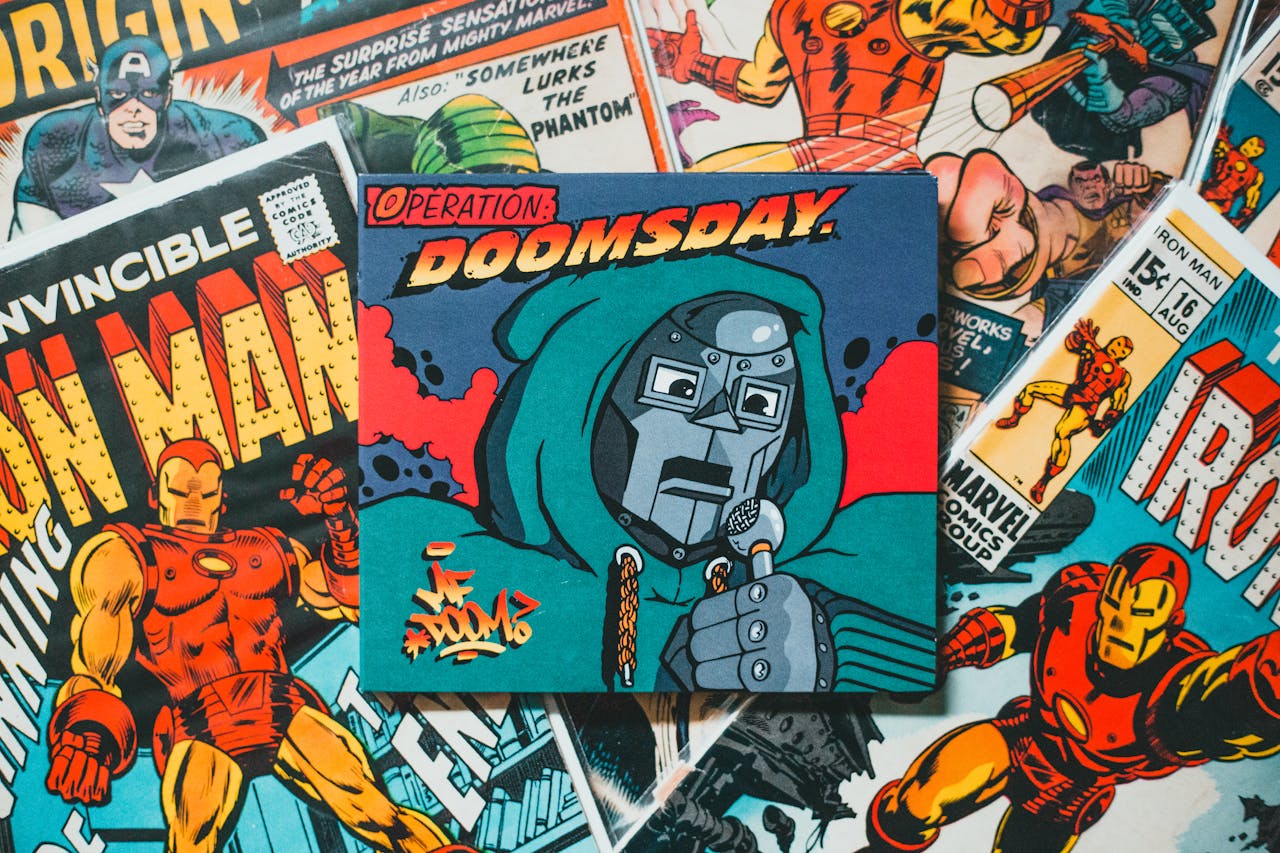|
IN BRIEF
|
Creating a comic book is not merely about stunning artwork; it’s about weaving a compelling narrative that resonates with readers. An engaging storyline captivates the audience, urging them to turn the page and dive deeper into your world. To achieve this, you must start with well-rounded characters who embody relatable struggles and desires. Introduce conflict that challenges these characters, propelling them on a journey filled with twists and surprises. Simplifying your plot is crucial, ensuring the essence shines through without getting lost in flowery language. A focused story reveals itself clearly, hitting the emotional chords of your readers. Prioritize genuine emotions, and strive for authenticity in your script to forge a connection with your audience—they will remember your tale long after the last panel.
Understanding the Core Elements of Your Narrative
At the heart of any successful comic book lies a compelling narrative. Understanding its core elements is essential to engage your readers effectively. A well-structured narrative not only captivates the audience but also immerses them in the world you’ve created.
Relatable Characters
Characters are the lifeblood of any story. Creating relatable characters ensures that readers can see aspects of themselves within the narrative. Characters should have distinct personalities, goals, and flaws. By carefully crafting their backgrounds and motivations, you allow readers to connect with them on an emotional level. This connection makes the characters’ journeys more impactful.
Compelling Conflict
No narrative is complete without conflict. This element drives the plot and keeps the readers engaged. An effective conflict presents challenges that the characters must navigate, testing their limits and revealing their true selves. Whether it’s an internal struggle or an external obstacle, the conflict shapes the story and leads to moments of tension that are vital for keeping readers on the edge of their seats.
Building Your Story Arc
Creating a solid story arc is crucial. It provides a framework within which your characters evolve and your conflict unfolds. The arc typically consists of exposition, rising action, climax, falling action, and resolution.
Crafting an Engaging Starting Point
The opening of your comic book is vital. It serves as the first impression that hooks the readers. Begin with an engaging scenario or intriguing question. This technique invites the readers into the world you’ve built, encouraging them to explore further. An effective opening should also introduce your main character and the central conflict while leaving room for questions that drive their curiosity.
Developing the Rising Action
As your story progresses, the rising action should escalate the stakes. Introduce obstacles and challenges that the protagonist must face. These should be intense and varied, integrating elements from your character’s backstory that deepen the connection with readers. Each challenge should lead to new developments, ensuring that the pacing remains dynamic and engaging.
Creating Plot Twists
Do not hesitate to include plot twists that surprise your audience. These unexpected turns can change the trajectory of your story and provoke strong emotional reactions. A well-placed twist adds intrigue and keeps readers guessing, ultimately enhancing their experience.
Writing a Strong Script
The script forms the backbone of your comic book. This is where you outline dialogues, actions, and character interactions. A strong script ensures that your narrative flows naturally while allowing for visual storytelling.
Balancing Dialogue and Action
It’s essential to strike a balance between dialogue and action. Overly verbose dialogues can clutter the panels, while too little dialogue risks losing reader engagement. Each line should serve a purpose, whether it’s developing a character or advancing the plot. Remember, actions often communicate just as much, if not more, than words.
Creating Visual Storytelling
Utilizing the visual elements of comics effectively enhances the narrative. Consider how the structure of your panels can convey emotion and movement. Play with shot choices, which can dramatically alter interpretation. Varying panel sizes and arrangements can create emphasis or tension, enriching the reader’s experience.
Thematic Depth and Resonance
Your comic book narrative should encompass themes that resonate with the audience. These deeper messages can make your story more memorable and thought-provoking. Themes provide an underlying meaning that encourages readers to reflect on their own lives and experiences.
Incorporating Universal Themes
Incorporating universal themes such as love, friendship, loss, or redemption allows readers from different backgrounds to relate to your narrative. These themes can be woven into your characters’ journeys, enriching the emotional experience and adding layers to the story.
Maintaining Reader Engagement
To keep readers invested in your story, continually engage them with revelations and developments that are relevant to the established themes. Allow the characters to experience growth or revelation in relation to these themes, thereby emphasizing their significance throughout the narrative arc.
Utilizing Feedback and Revision
Creating a comic book is an iterative process. Utilize feedback from fellow writers and potential readers to refine your narrative. Constructive criticism provides valuable insight into areas that may need improvement.
The Importance of Revision
Revision is a crucial step in the writing process. It allows you to revisit and adjust elements of your narrative, enhancing clarity and coherence. Ensure that each scene contributes meaningfully to the overall arc. Look for inconsistencies in characters or plotlines and rectify them to maintain a smooth flow throughout the story.
Test Your Narrative
Consider hosting a test reading with a select group of individuals. This will help you gauge their reactions and understand whether your narrative effectively engages them. Pay attention to their responses, taking notes on what resonated and what fell flat.
Leveraging Storyboarding Techniques
Once your narrative takes shape, a storyboard serves as a useful visual representation of the comic. This step allows you to plot out each panel, ensuring that the visual flow aligns with the narrative.
Thumbnail Sketches for Flow
Creating thumbnail sketches helps visualize how your story unfolds across the pages. This draft-like method allows you to experiment with pacing and transitions. Make sure to check how the eye flows from one panel to the next, adjusting where necessary to enhance storytelling.
Incorporating Visual Cues
Incorporating visual cues such as facial expressions, body language, and setting details can greatly enhance the narrative experience. These elements contribute to the story’s emotional depth and help convey the characters’ internal states, enriching the reader’s overall understanding of the narrative.
Exploring Additional Resources
Diving deeper into the world of comic book writing can greatly improve your skills. There are numerous resources available that provide insights and techniques to enhance your storytelling.
Exceptional Case Studies
Engaging with case studies, such as significant Batman story arcs, can offer inspiration and guidance on building intricate plotlines and character development. Studying these iconic narratives helps in understanding how to craft compelling character journeys intertwined with suspenseful storytelling.
The Role of Collaborators
Additionally, educate yourself about the role of an inker or colorist. Their contributions are paramount to bringing the narrative to life visually. Collaborating with skilled artists enhances the overall impact of your story, complementing the script with stunning visuals.
Expanding Your Knowledge
Understanding the rich history of comics can provide invaluable context. This knowledge equips you with tools to innovate within the genre while paying homage to its roots. Exploring the past opens avenues for creative possibilities.
Podcast Insights
Listening to comic book podcasts can also prove insightful. These discussions often unpack the nuances of storytelling, offering unique perspectives that can inspire your work. Take notes on techniques shared in these forums, incorporating new strategies into your writing process.
Conclusion of Crafting Your Narrative Journey
Every comic book has the potential to captivate and engage readers through a carefully crafted narrative. By focusing on relatable characters, compelling conflict, and thematic depth while utilizing effective storytelling techniques, you can create an experience that resonates with your audience. Continually refine your work, utilizing feedback and additional resources to further enhance your storytelling prowess. The journey of crafting a captivating narrative is a rewarding one, filled with opportunities for creative expression.
Creating an engaging narrative for a comic book requires a careful balance of character development, conflict, and relatable themes. According to recent surveys, readers are more likely to connect with stories that delve into the emotional complexities of characters. For instance, 78% of comic book enthusiasts express a preference for narratives where characters face significant struggles, making them more relatable.
Moreover, the introduction of a compelling conflict is essential. A well-crafted conflict serves as the backbone of any story, driving the plot forward. Utilizing methods such as the three-act structure can effectively organize your storytelling process, allowing for a clear setup, confrontation, and resolution.
Transitioning into the narrative’s execution, it is crucial to keep the pacing in mind. Quick, action-driven scenes should be interspersed with moments that allow readers to digest character motivations and developments. For comprehensive insights on writing compelling narrative arcs, sites like Quora offer valuable resources, making it easier for writers to grasp the elements of good storytelling.
Crafting an engaging narrative for your comic book is an art that combines character development, intriguing conflicts, and a captivating plot. Start with a simple, action-driven storyline that allows the essence of the narrative to shine through. Focus on relatable characters who evoke genuine emotions in your readers. Strive for a balance between dialogue and visuals, ensuring that each panel contributes to the larger story. Incorporating hooks and surprises can effectively maintain reader interest. Remember to streamline your script, avoiding unnecessary details while still fleshing out the core of your story. Engaging narratives are not just told; they are felt and experienced, making the journey of creation both challenging and rewarding.
FAQ
What are the key components of an engaging comic book narrative?
R: An engaging comic book narrative typically includes well-developed characters, a compelling conflict, and a cohesive plot. The story should resonate with the readers and evoke real emotions through relatable experiences.
How important is character development in a comic book?
R: Character development is crucial as it allows readers to connect with the characters on a personal level. Creating multi-dimensional characters with clear motivations and backstories enhances the emotional impact of the story and keeps readers invested.
Should I stick to a simple plot when creating a comic book?
R: Yes, it’s often beneficial to maintain a simple and action-driven plot. A straightforward storyline helps in keeping the focus on the main events without overwhelming readers with unnecessary details, allowing the plot to unfold naturally.
How can I surprise my readers in my comic book?
R: Incorporating unexpected twists or character revelations can keep readers intrigued. It’s essential to set up these surprises carefully, so they feel organic to the narrative rather than contrived, enhancing the overall reading experience.
What techniques can I use to organize my narrative effectively?
R: Utilizing thumbnails, sketches, or point-form outlines can help in organizing your narrative. This approach allows you to visualize the flow of the story and ensures that important elements are included while maintaining coherence throughout the comic.

